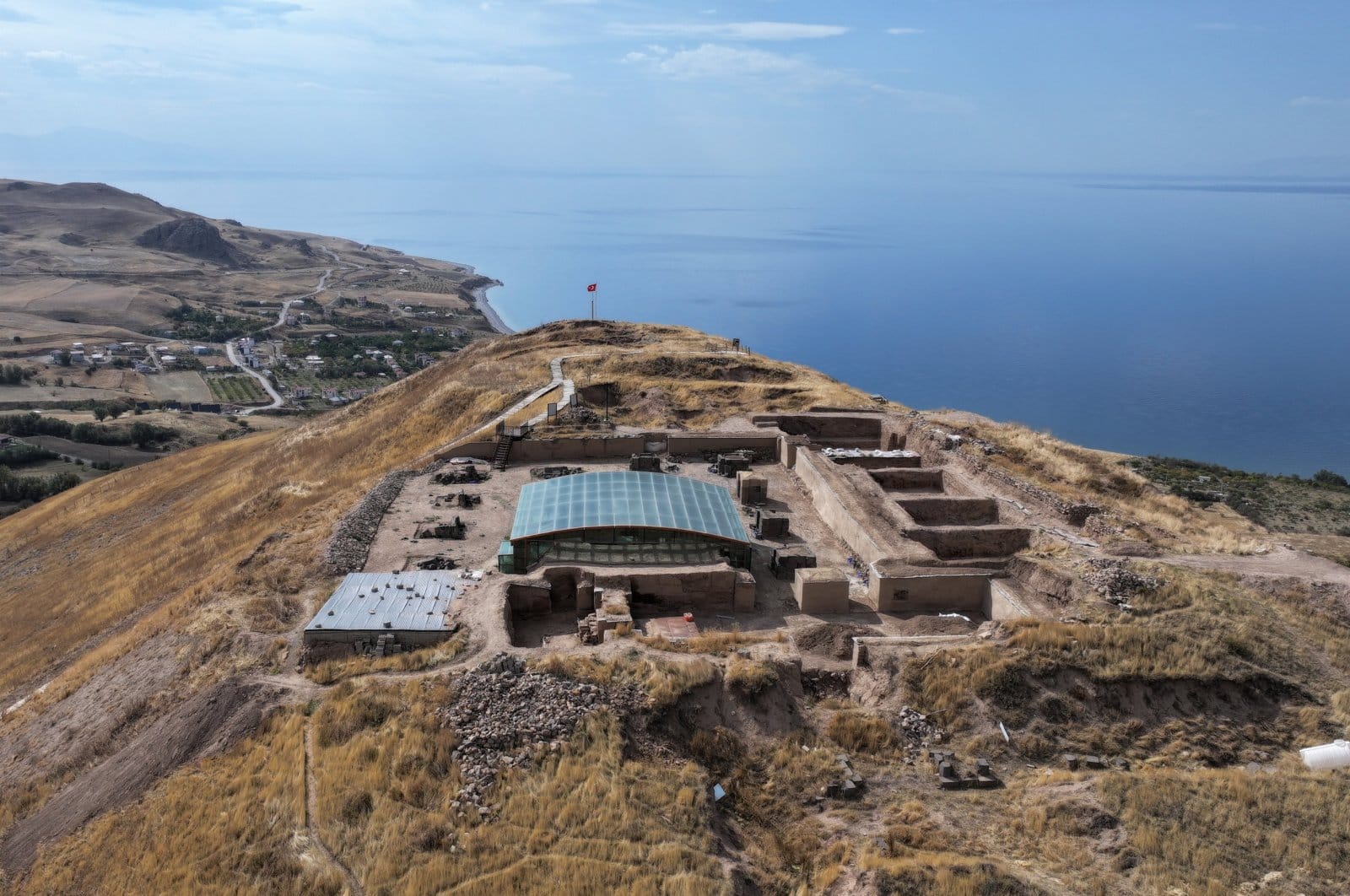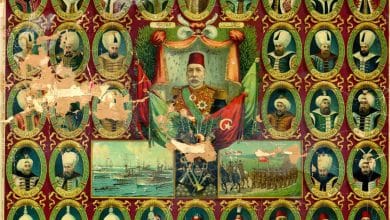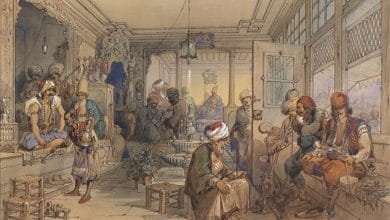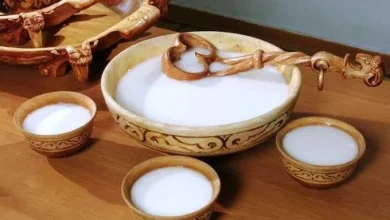Excavations at Ayanis Castle unveil magnificent Urartian walls
A Fortress Built by Urartian King Rusa II

A Fortress Built by Urartian King Rusa II
Excavations at Ayanis Castle in Van’s Tuşba district in eastern Türkiye reveal the grandeur of the ancient fortress, once a symbol of the Urartian Kingdom, as newly uncovered walls highlight its impressive structure.
The castle was built by Urartian King Rusa II on a hill overlooking Lake Van and features walls made of mudbrick, intricate stonework, and ornate decorations. These elements make it one of the most magnificent surviving structures of the Urartian civilization. Excavation and restoration efforts are currently underway at the site, which has been the focus of archaeological digs for the past 37 years, under the permission of the Ministry of Culture and Tourism.
Uncovering Bronze Shields and Helmets in Honor of Haldi
“This year, excavations uncovered three bronze shields and a helmet dedicated to Haldi, the chief god of the Urartians. The team, led by Professor Mehmet Işıklı of Atatürk University’s Department of Archaeology, also revealed sections of the castle’s fortifications. Experts in anthropology, archaeology, city planning, art history, and restoration are involved in the project.
Recently, work shifted toward the castle’s outer walls, especially the southeastern section. The newly uncovered walls show an impressive use of interlocking stones, designed to withstand earthquakes—common in the region.
Professor Işıklı told Anadolu Agency that restoration aims to fully reveal the castle’s outer walls, restoring its former glory. “This work is part of the Ministry of Culture and Tourism’s ‘Legacy for the Future’ project,” he said.
According to Işıklı, recent discoveries are adding to our understanding of Urartian history. “We are restoring the castle’s walls to their original grandeur. Previously exposed sections of the fortifications have been carefully cleaned and restored,” he added.
Fortifications of Ayanis Castle: Mastery of Stone and Earthquake Resistance
Excavations began in July and have been continuous for the past five months. This year’s work has uncovered a 200-meter (656.17-foot) section of the city’s citadel, revealing large, irregular stones used in the eastern and northern sections of the wall.
“In the southern wall and monumental gate, we encounter an exceptional level of craftsmanship, demonstrating the pinnacle of Urartian stonework,” Işıklı said. “The stones are expertly shaped and set into the bedrock, a testament to the skill of Urartian masons. This is why the Urartians are often referred to as the ‘lords of stone.'”
Işıklı emphasized that the castle’s fortifications are among the best-preserved in the world. “In fact, the southern wall, which still stands intact for five meters, is particularly impressive,” he said.
Restoration and Excavations: Preserving Urartian Heritage in Van
“In the coming season, we plan to continue excavating and restoring the remaining sections of the city walls and integrate them into the region’s tourism infrastructure. The support of Van’s Governor Ozan Balcı has been instrumental in keeping this project going. The excavation house built by the governor’s office has been vital to our work, and we are grateful for his continued support.”
Ilhan Özgür, a graduate student in the Department of Archaeology at Atatürk University, also spoke about the significance of the ongoing excavations. “Over the past 37 years, countless artifacts have been unearthed here, offering important insights into Urartian culture,” he said. “Our aim is to uncover more of the surrounding walls and restore the castle’s full splendor. We’re making great strides in understanding the connection between the fortifications and the bedrock beneath.”
Özgür noted the exceptional craftsmanship of the basalt stones used in the castle’s construction, adding that the techniques employed to enhance the fortress’s earthquake resistance were remarkably advanced. “The use of interlocking stones to reinforce the walls shows how the Urartians built to last. They even constructed an additional mudbrick wall, measuring up to 17-18 meters, to further strengthen the structure,” he said.






